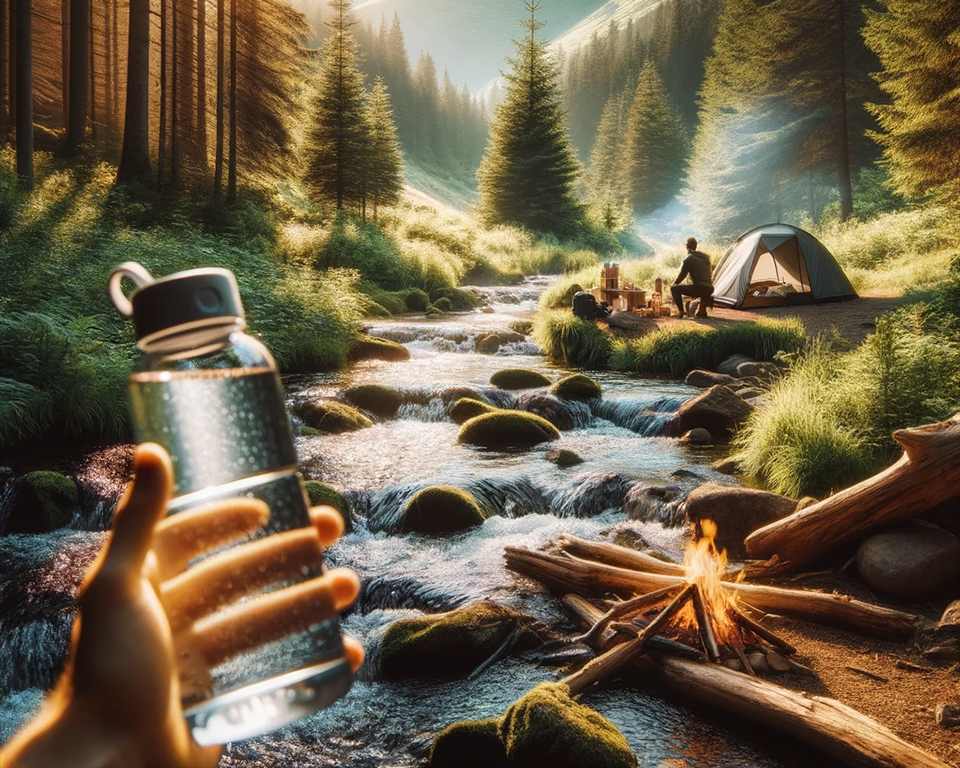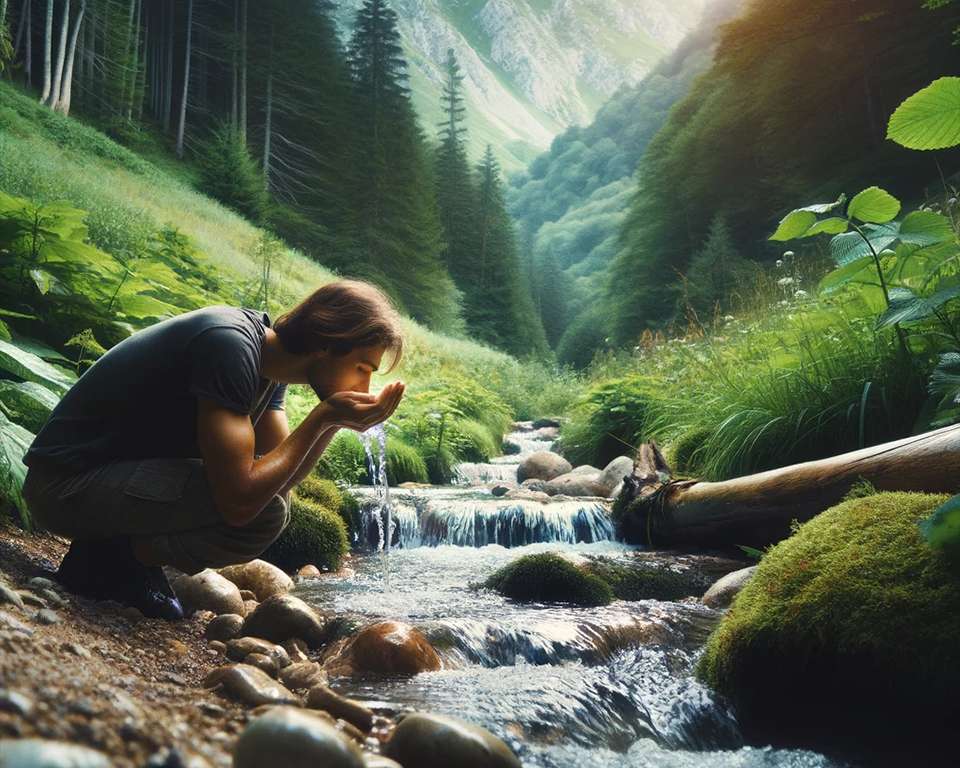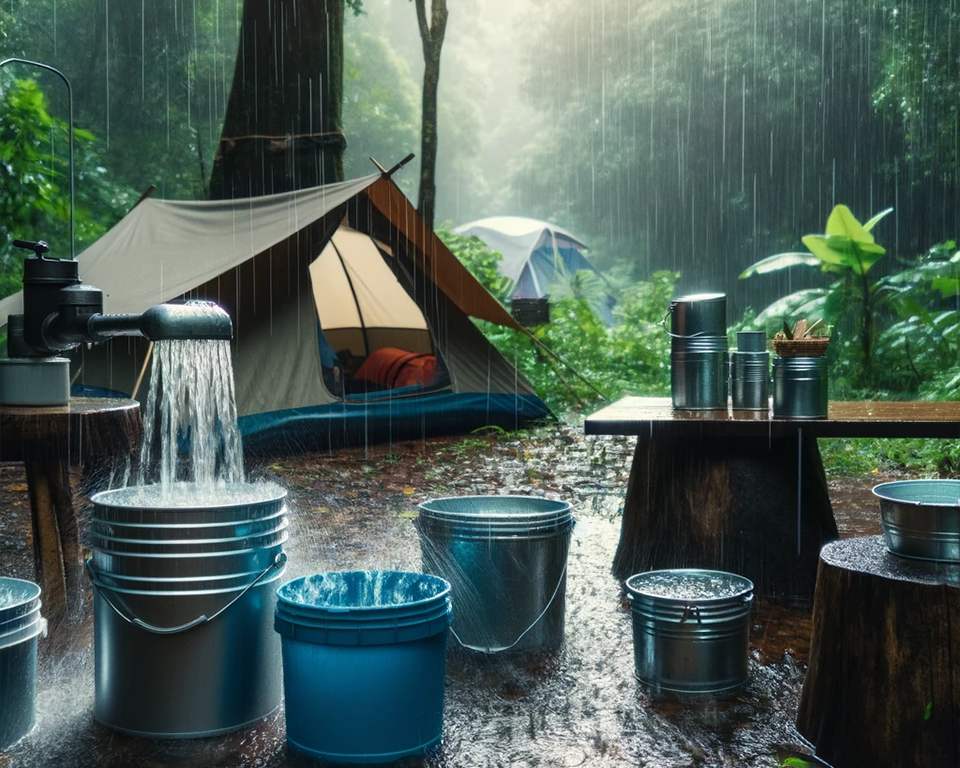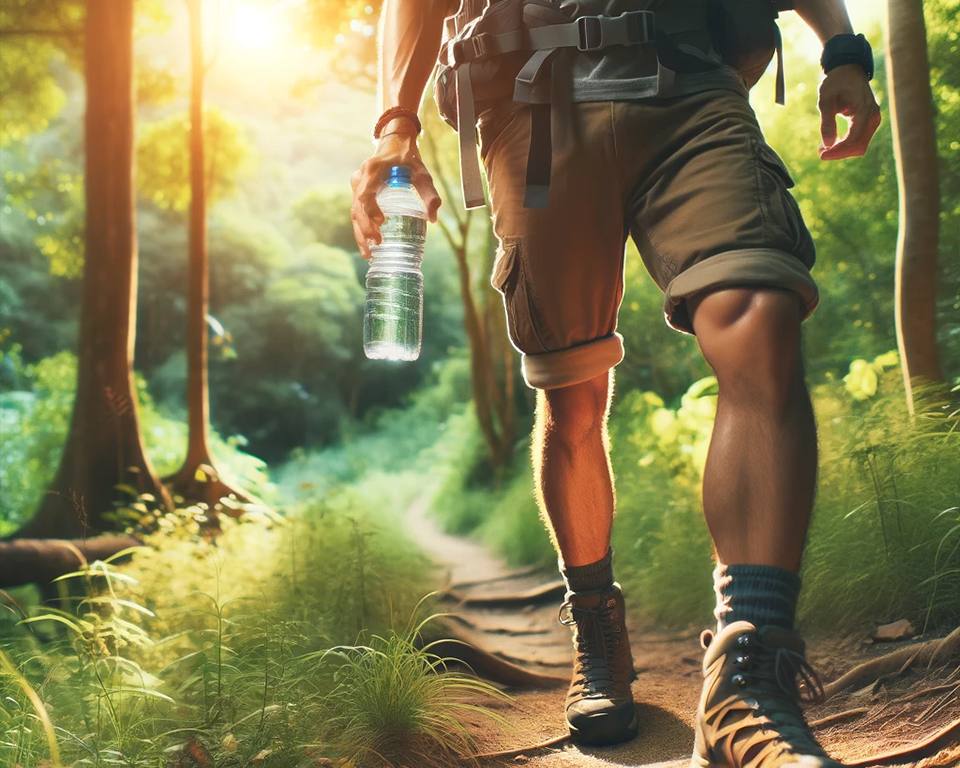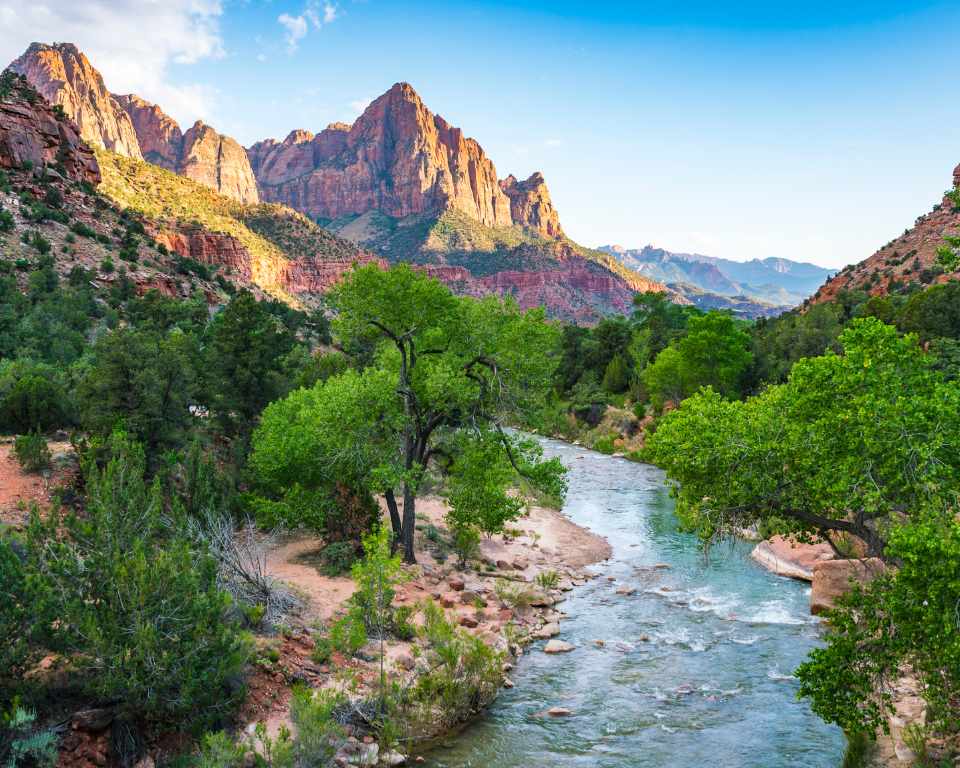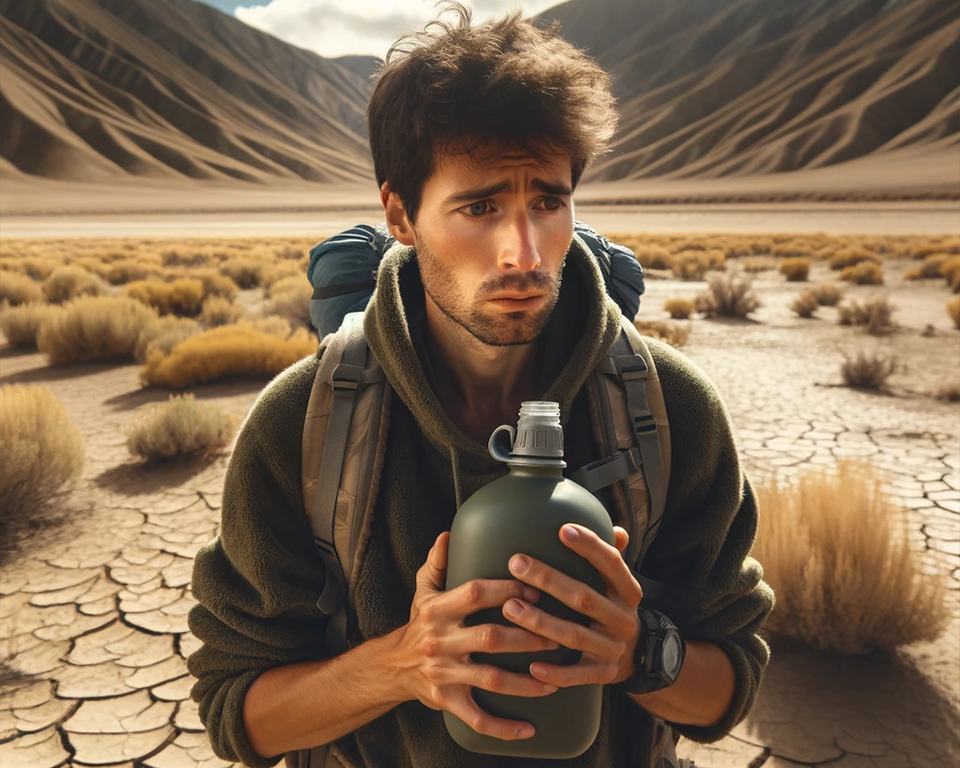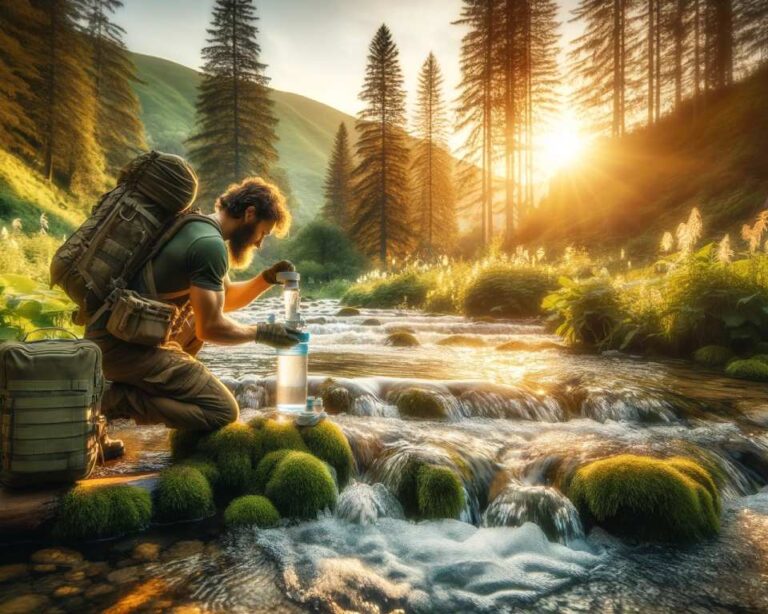Staying Hydrated in the Wilderness
Hydration when camping is essential for staying safe, healthy, and energized during your outdoor adventures. At [Brand Name], we understand the importance of staying hydrated while camping and want to share some valuable tips and insights with you.
In this article, we will explore effective camping hydration strategies and provide you with practical camping hydration tips. From finding water sources in the wilderness to understanding the significance of hydration gear, we’ve got you covered.
Staying properly hydrated while camping is a vital aspect of your overall camping experience. Dehydration can negatively impact your energy levels, physical performance, and overall well-being. By following our expert camping hydration advice, you can make the most of your outdoor adventures and ensure a safe and enjoyable time in the wilderness.
Finding Water in the Wilderness
When camping in the wilderness, finding a reliable source of water is essential for staying hydrated. Thankfully, nature provides us with various options to quench our thirst and ensure our well-being. Let’s explore some of the ways you can find water in the wild.
Fruit and Vegetation for Hydration
In certain environments, you can find hydration in unexpected places – in the form of fruits and vegetation. Moisture-laden plants like cacti, coconuts, and certain berries can serve as natural hydration sources. These fruits contain water that is safe to consume, providing both refreshment and essential nutrients.
Vegetation such as succulent plants, like aloe vera and prickly pear, store water in their leaves, making them an excellent resource for hydration. However, be cautious and ensure proper identification before consuming any plants in the wild to avoid poisonous species.
Tapping Trees for Water
Another method to obtain water in the wilderness is tree tapping. This ancient practice involves extracting sap from specific types of trees, like birch and maple. The sap, which flows naturally within these trees, can be collected and consumed as a source of hydration.
Tree tapping requires some knowledge and technique, such as knowing the right time to tap and how to collect the sap properly. It’s crucial to respect nature and the trees by only tapping a small portion and using sustainable practices.
“Finding water sources in the wilderness is a skill that every camper should possess. By understanding how to identify moisture-laden plants and tapping into the natural resources around us, we can ensure our hydration needs are met while immersing ourselves in the beauty of the great outdoors.”
Remember, when relying on fruit, vegetation, or tree tapping for hydration, it’s essential to prioritize safety and ensure proper identification of edible plants and trees. Additionally, always carry purification or filtration methods to treat water sources found in the wild, to eliminate any potential risks.
Exploring these natural water sources adds an exciting and sustainable element to your camping experience. By understanding the environment and being resourceful, you can enjoy the serenity of the wilderness while staying hydrated.
Drinking from Flowing Streams
When exploring the wilderness, finding clean water sources is essential for staying hydrated and maintaining your energy levels. One reliable option is drinking from flowing streams and rivers.
The natural flow of water helps reduce the presence of bacteria and contaminants, making it a safer choice for hydration. However, it’s crucial to assess the cleanliness of the water before drinking it. (For a list of indicators to determine water cleanliness, refer to Section 1: Staying Hydrated in the Wilderness.)
Collecting water from a flowing source requires caution and consideration. It’s advisable to choose a spot upstream from any potential pollutants or contaminants. Avoid areas with visibly polluted water or nearby human activity that may affect the water quality. In addition, be cautious of any dead animals or animal waste in the vicinity, as they can contaminate the water source.
Remember, even though flowing streams and rivers generally provide cleaner water, it’s still essential to purify the water before consuming it in order to eliminate any remaining bacteria or parasites. This can be done through water filtration, boiling, or using water purification tablets or systems.
Collecting Snow for Hydration
In winter or mountainous areas where flowing streams might be scarce or inaccessible, an alternative source of hydration is collecting snow.
To collect snow for hydration, find a clean, undisturbed area away from potential pollutants. Use a clean container or bag to collect the snow. It’s important to avoid yellow, brown, or discolored snow as it may be contaminated.
Pro tip: When melting the snow, be sure to use a reliable heat source, such as a stove or campfire, to ensure the water is adequately purified.
Remember, melting snow requires extra time and effort, so it’s crucial to plan accordingly and have enough fuel or supplies available.
By being mindful of water sources and making informed choices, you can stay hydrated and enjoy your outdoor adventures while minimizing the risk of waterborne illnesses.
Collecting Rainwater
Rainwater can be a valuable resource for hydration when camping. It is a natural source of water that is generally clean and free from chemicals or additives. However, it is important to take precautions to ensure the rainwater you collect is safe for consumption.
One way to collect rainwater is by setting out containers strategically to catch the falling rain. Place them in open areas away from trees or buildings to ensure maximum collection. Make sure the containers are clean and free from any contaminants.
Another method is to use waterproof tarps or sheets to create a collection system. By positioning the tarp at an angle, you can direct the rainwater into a container or bucket. Ensure that the tarp is clean and doesn’t have any tears or holes that could allow debris or pollutants to contaminate the collected water.
Pro tip: Be cautious of the materials used in your collection system. Avoid tarps with PVC or other chemicals that may leach into the water. Opt for food-grade containers or tarps made specifically for rainwater collection.
Once you have collected the rainwater, it is essential to filter and purify it to remove any potential pollutants or bacteria. A simple filtering system can be created by passing the collected water through a clean cloth or coffee filter to remove any debris. Additionally, using a water purification method, such as boiling or using water purification tablets, can further ensure the water’s safety for consumption.
Remember, rainwater collection should not be relied upon as the sole source of hydration. It is essential to have a backup supply of water or ensure access to other clean water sources, especially in situations where rainwater is scarce.
The Benefits of Collecting Rainwater for Hydration:
- Provides a natural and sustainable source of hydration
- Reduces reliance on other water sources
- Helps conserve water
- Can be used for various purposes, such as washing dishes or clothes
“Collecting rainwater not only helps with hydration but also promotes self-sufficiency in outdoor environments.”
By understanding how to properly collect and store rainwater, you can enhance your camping experience and minimize the risk of dehydration. Remember to take necessary precautions to filter and purify the collected rainwater before consuming it.
Importance of Hydration Gear
When it comes to camping trips, having the right hydration gear is absolutely essential for staying properly hydrated. It’s important to consider various options for hydration gear such as hydration packs, water bottles, and water storage containers. These gear choices not only ensure easy access to water while on the move but also provide ample water storage for all your outdoor adventures.
Hydration Packs: Stay Hydrated on the Go
Hydration packs are an excellent choice for campers who need hands-free access to water while hiking or engaging in other outdoor activities. These packs typically consist of a water reservoir that attaches to a backpack, allowing you to conveniently sip water through a tube without having to stop and reach for a water bottle. With hydration packs, you can stay hydrated and quench your thirst without interruption.
Water Bottles: Portable and Compact
Water bottles are a classic hydration gear option that remains popular among campers. They are portable, easy to carry, and come in a variety of designs and capacities to suit your needs. Whether you prefer a stainless steel bottle to keep your water cool or an eco-friendly reusable bottle, having a trusty water bottle ensures you always have a hydration solution within arm’s reach.
Water Storage Containers: Stay Well-Stocked
Water storage containers play a crucial role in camping trips, especially when access to clean water sources may be limited. These containers come in various sizes and materials, allowing you to store a sufficient amount of water for cooking, cleaning, and drinking. From collapsible options that save space in your backpack to sturdy containers designed for long-term storage, investing in water storage solutions ensures you’re well-prepared for any camping scenario.
Having the right hydration gear is like having a reliable companion on your camping adventures. It ensures you can quench your thirst whenever you need, allowing you to focus on enjoying the great outdoors.
With hydration packs, water bottles, and water storage containers, you can stay well-hydrated, even in the most remote camping locations. So, before you embark on your next outdoor adventure, make sure to equip yourself with the proper hydration gear. Your body will thank you!
Hydration Habits and Tips
When camping, establishing good hydration habits is crucial to ensure you stay hydrated and maintain your energy levels. Even if you don’t feel thirsty, it’s important to drink water at regular intervals. Dehydration can sneak up on you, especially when you’re outdoors and physically active. By establishing a drinking schedule and being mindful of signs of dehydration, you can enjoy your camping trips to the fullest.
Best Ways to Hydrate While Camping
The best way to hydrate while camping is to make water readily available and prioritize drinking it throughout the day. Here are some tips:
- Carry a refillable water bottle with you at all times. This ensures you have access to water whenever you need it.
- Set reminders on your phone or watch to drink water at regular intervals, even if you don’t feel thirsty.
- Incorporate hydrating foods into your meals and snacks, such as fruits and vegetables with high water content like watermelon and cucumber.
- Avoid excessive consumption of caffeinated or alcoholic beverages, as they can dehydrate you.
Remember, staying hydrated while camping is not only about drinking water but also replenishing electrolytes. Consider bringing along electrolyte tablets or sports drinks to maintain a healthy balance.
Establishing a Drinking Schedule
Establishing a drinking schedule can help you stay on track with your hydration goals. Here’s how you can create a drinking schedule while camping:
- Plan to drink a certain amount of water at regular intervals, such as every hour or every 30 minutes, depending on your activity level and the weather conditions.
- Set reminders on your phone or watch to notify you when it’s time to drink water.
- Use a water tracking app or a wearable device to keep track of your water intake and ensure you meet your daily hydration goals.
- Make it a habit to drink water before and after physical activities, such as hiking or setting up camp.
Signs of Dehydration During Camping
It’s important to be aware of the signs of dehydration while camping, as it can lead to serious health issues. Look out for these signs:
- Feeling thirsty
- Dry or sticky mouth
- Decreased energy levels
- Dark yellow or amber-colored urine
- Dizziness or lightheadedness
- Dry skin or lips
- Headache
If you experience any of these symptoms, it’s crucial to rehydrate immediately. Take a break, find shade, and drink water to replenish your fluids. If symptoms persist or worsen, seek medical attention.
Don’t let dehydration ruin your camping adventure. By establishing good hydration habits, prioritizing water intake, and being aware of the signs of dehydration, you can enjoy your camping trips while staying safe and well-hydrated.
Water Sources in Zion National Park
When visiting Zion National Park, it’s crucial to know where to find reliable water sources to stay hydrated. Thankfully, the park provides convenient drinking water stations at various locations, including the visitor center and museums. These stations offer clean and safe drinking water, ensuring that you can quench your thirst during your exploration of the park.
However, it’s important to note that when venturing into remote areas of the park, drinking water stations might not be readily available. In such cases, it’s advisable to pack supplies for treating or filtering water to ensure your hydration needs are met. Portable water filters or water purification tablets can be excellent solutions to make water from natural sources safe to drink.
Staying hydrated is especially crucial when exploring Zion National Park due to its dry and arid climate. The Southern Utah region experiences low humidity, which can quickly lead to dehydration if you’re not careful. Proper hydration will not only help you stay comfortable and energized during your adventures but also contribute to your overall safety in this beautiful wilderness.
Hydration Tips for Exploring Zion National Park
Hiking and exploring Zion National Park can be an exhilarating experience, immersing you in stunning natural beauty and challenging terrains. However, the dry and arid climate of the park makes staying hydrated a top priority for your safety and well-being.
When venturing into Zion National Park, it is crucial to drink more water than usual, especially during strenuous activities like hiking. The intense heat and physical exertion can quickly deplete your body’s hydration levels, leading to fatigue, dizziness, and even heatstroke.
Establish a Good Drinking Schedule
To stay hydrated in the outdoors, it is essential to establish a consistent drinking schedule. Aim to drink water regularly throughout the day, even if you don’t feel thirsty. Thirst is not always a reliable indicator of your body’s hydration needs. By staying ahead of your thirst, you can maintain optimal hydration levels and avoid potential dehydration.
Carry Sufficient Water
When exploring Zion National Park, always carry enough water to last the duration of your outdoor activities. Packing a reusable water bottle or hydration bladder is the most convenient way to ensure a constant supply of water. Aim to bring at least one liter of water per hour of hiking, adjusting this amount based on weather conditions and the intensity of your activity.
Know the Symptoms of Dehydration
Being aware of the signs of dehydration is essential for prompt action and prevention. Look out for symptoms such as thirst, dry mouth, fatigue, darker urine, and dizziness. If you experience any of these symptoms, it’s crucial to find shade, rest, and hydrate immediately to avoid further complications.
Hydration is Vital for an Enjoyable Experience
Proper hydration is key to ensuring your exploration of Zion National Park is enjoyable and safe. By following these hydration tips, you’ll be able to maintain your energy levels, enhance endurance, and fully appreciate the beauty of this incredible national park.
Recognizing Dehydration Symptoms
Recognizing the symptoms of dehydration is crucial for preventing severe dehydration during outdoor activities. As we engage in physical exertion and spend time in the sun, it’s important to pay close attention to our body’s hydration needs. By understanding the signs of dehydration, we can take prompt action to rehydrate and avoid potential health complications.
Some of the early signs of dehydration to watch out for include:
- Thirst: Feeling thirsty indicates that your body is already experiencing dehydration. It’s essential to drink water as soon as you start feeling thirsty.
- Dry mouth: A dry mouth is a common symptom of dehydration. It’s important to keep your mouth moisturized by drinking water regularly.
- Decreased energy: Dehydration can lead to fatigue and a decrease in energy levels. If you’re suddenly feeling more tired than usual, it may be a sign that you need to rehydrate.
- Dark yellow urine: The color of your urine can indicate your hydration status. Dark yellow urine is a sign that your body needs more fluids.
In more severe cases, dehydration can lead to the following symptoms:
- Muscle cramps: Dehydration can cause muscle cramps and spasms. If you experience sudden muscle cramps, it’s crucial to rehydrate and seek shade.
- Dizziness: Dehydration can make you feel lightheaded or dizzy. If you start experiencing these symptoms, take a break, find a cool spot, and drink water.
- Nausea: Dehydration can lead to feelings of nausea or an upset stomach. Rehydrating and resting can help alleviate these symptoms.
When it comes to dehydration, prevention is key. It’s important to drink water regularly and stay hydrated before, during, and after outdoor activities. Remember to listen to your body and respond promptly to any signs of dehydration.
By being proactive in recognizing and addressing dehydration symptoms, you can ensure a safe and enjoyable outdoor experience. Stay well-hydrated and be mindful of your body’s hydration needs to optimize your performance and well-being during outdoor adventures.
Dealing with Water Scarcity and Overhydration
Camping in the wilderness can sometimes present challenges, including the scarcity of water or the risk of overhydration. It is important to know how to handle these situations to ensure a safe and enjoyable camping experience.
If you find yourself running out of water in the wilderness, there are a few strategies you can employ. First, conserve any remaining water by rationing it carefully. Prioritize essential activities like drinking and cooking, and avoid using water for non-essential tasks. Additionally, explore alternative sources of water such as nearby streams, rivers, or natural springs. Remember to filter and purify water from these sources before consuming it.
On the other hand, overhydration can be just as dangerous as dehydration. While staying hydrated is crucial, drinking excessive amounts of water can lead to hyponatremia, a condition that occurs when the body’s sodium levels become dangerously low. To avoid overhydration, monitor your water intake and listen to your body’s thirst signals. Drink when you are thirsty, but do not force yourself to drink beyond your body’s needs.
Properly managing water scarcity and avoiding overhydration is essential for a safe and successful camping adventure. By conserving water, utilizing alternative sources, and understanding your body’s hydration needs, you can navigate these challenges and ensure a memorable outdoor experience.
FAQ
How can I find water sources when camping in the wilderness?
There are several methods to find water sources in the wilderness. You can identify moisture-laden plants and fruits that provide clean drinking water or practice tree tapping to extract sap from edible trees like birch and maple. Flowing streams and rivers can also be reliable sources of clean water in the wild. It’s important to assess the cleanliness of the water before consuming it. Additionally, you can collect and melt snow for hydration, especially in winter or mountainous areas.
How can I collect and store rainwater for hydration while camping?
Rainwater can be a valuable resource for hydration while camping. To collect rainwater, you can set out containers or use waterproof tarps to capture the rain. However, caution should be taken to avoid consuming pollutants or bacteria. It’s important to understand proper rainwater collection and storage techniques to ensure its cleanliness for drinking.
What hydration gear should I have for camping trips?
Having the right hydration gear is essential for staying properly hydrated while camping. Consider investing in hydration packs, water bottles, and water storage containers. These gear options allow for easy access to water on the move and ensure you have enough water for your outdoor adventures.
What are some hydration habits and tips for camping?
To stay hydrated while camping, it’s important to drink water at regular intervals, even if you don’t feel thirsty. Establishing a good drinking schedule is crucial for maintaining hydration levels. Be aware of the signs of dehydration, such as decreased energy and dark yellow urine. Remember to drink more water than usual, especially during strenuous activities.
Where can I find reliable water sources in Zion National Park?
Zion National Park offers drinking water stations at various locations, including the visitor center and museums. It is recommended to pack supplies for treating or filtering water when venturing into remote areas of the park. Staying hydrated is especially important in the dry, arid climate of Southern Utah.
What are some hydration tips for exploring Zion National Park?
When hiking and exploring Zion National Park, it is crucial to pay extra attention to hydration due to the dry and arid climate. It is recommended to drink more water than usual, especially during strenuous activities. Establishing a good drinking schedule, carrying enough water, and being aware of the symptoms of dehydration are essential for a safe and enjoyable experience in the park.
How can I recognize dehydration symptoms during outdoor activities?
Recognizing the symptoms of dehydration is crucial for preventing severe dehydration during outdoor activities. Symptoms of early dehydration include thirst, dry mouth, decreased energy, and dark yellow urine. Severe dehydration symptoms may include muscle cramps, dizziness, and nausea. It’s important to address dehydration promptly by rehydrating and seeking shade if needed.
What should I do if I run out of water in the wilderness?
Running out of water in the wilderness can be a challenging situation. It’s important to stay calm and assess your options. If possible, try to find alternative water sources such as lakes, ponds, or natural springs. Filtering or purifying water is recommended to ensure its safety for consumption. Additionally, conserving water and reducing physical activity can help manage the situation until you can access a water source.
Should I be concerned about overhydration during camping?
While staying hydrated is important, overhydration can be as dangerous as dehydration. It’s crucial to strike a balance and avoid excessive water intake. Pay attention to your body’s signals of thirst and hydration levels. Drinking water at regular intervals and being aware of the signs of overhydration, such as frequent urination and swelling, can help prevent overhydration during camping.

